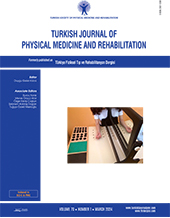Noninvasive neuromodulatory effect on cognition in individuals with traumatic brain injury: A single-blinded, two-arm parallel randomized clinical trial
2 Pal Healthcare Centre, Jandli, Ambala City, Haryana, India
3 NIMS College of Physiotherapy and Occupational Therapy, NIMS University, Jaipur, Rajasthan, India
4 Department of Neurosurgery, RD Gardi Medical College and Attached Hospital, Ujjain, Madhya Pradesh, India DOI : 10.5606/tftrd.2024.12252 Objectives: The study aimed to compare the effect of cranial electrical stimulation (CES) and transcranial direct current stimulation (tDCS) in improving cognition among individuals with mild traumatic brain injury.
Patients and methods: The pretest-posttest randomized controlled study was conducted between November 2020 and March 2022. Seventy-two patients (64 males, 8 females; mean age: 40.5±9.5 years; range, 18 to 45 years) experiencing cognitive impairment within three months of traumatic brain injury were recruited. Participants were randomly assigned into two groups: Group 1 (CES with cognitive training, n=36) and Group 2 (tDCS with cognitive training, n=36). Participants were blinded in the study. Both groups received 30-min sessions of neuromodulation along with 30 min of cognitive training five days a week for four weeks. The patients were assessed at baseline and at the end of two and four weeks of intervention. The primary outcome measure was the Montreal Cognition Assessment (MoCA), and the secondary outcome measure was the Galveston Orientation Amnesia Test (GOAT).
Results: Demographic and baseline characteristics depicted normal distribution for both groups (p>0.05). Within group analyses of both groups demonstrated significant differences for both outcome measures (MoCA: p=0.001; GOAT: p=0.001). Between group analyses of MoCA showed significant improvement with p-value of 0.001 while GOAT exhibited p-value of 0.002 showing significant difference between the two groups. Time group interaction effect and covariance analyses depicted significant improvement with p-value of 0.001 for both outcome measures with excellent effect size >0.80.
Conclusion: Cranial electrical stimulation was a more effective noninvasive neuromodulatory device than tDCS in improving cognition among individuals with traumatic brain injury.
Keywords : Brain stimulation, cranial electrical stimulation, cognitive dysfunction, head trauma, neuromodulation, transcranial direct current stimulation
















